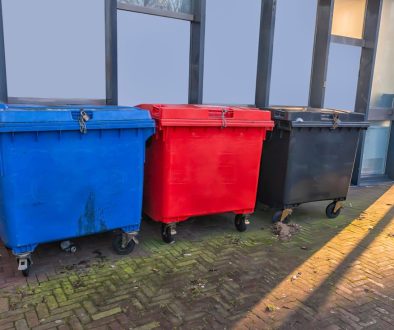Managing rubbish effectively on construction sites is crucial for maintaining a safe and efficient work environment. Segregating different types of waste helps in reducing the environmental impact, ensuring compliance with regulations, and promoting recycling efforts. At Enviro Skip Hire, we understand that proper segregation can significantly improve waste management practices, making the entire process more streamlined and cost-effective.
Construction sites generate a variety of waste materials, from concrete and wood to hazardous substances like asbestos and chemicals. Mixing these wastes can lead to safety hazards, increased disposal costs, and missed recycling opportunities. By implementing a systematic approach to waste segregation, we can ensure that recyclable materials are recovered, hazardous waste is handled safely, and overall project costs are minimised.
In this article, we will explore the importance of segregating rubbish on construction sites, discuss the different types of waste and how to identify them and provide effective tools and methods to aid in segregation. We will also share best practices to ensure compliance with regulations and enhance the efficiency of your waste management processes. Proper waste segregation is not just a regulatory requirement; it’s a step towards a more sustainable and cost-efficient project.
Identifying Hazardous Waste on Your Site
Identifying hazardous waste on your site is a crucial first step in ensuring safe handling. Hazardous waste includes materials that are dangerous or potentially harmful to our health and the environment. Common examples on construction sites include lead-based paints, asbestos, solvents, and certain types of batteries. Knowing what materials are classified as hazardous helps us handle them carefully and store them properly.
To identify hazardous waste, look for labels and signs that indicate toxicity, flammability, reactivity, or corrosiveness. Pay attention to the packaging and any safety data sheets that come with the materials. This information usually provides details on the potential hazards and how to handle the waste safely. If you’re unsure, it’s best to consult with waste management experts who can provide guidance and assistance in correctly identifying hazardous substances.
Essential Safety Gear for Handling Hazardous Waste
Using the proper safety gear is essential when handling hazardous waste. Safety gear helps protect us from exposure to dangerous substances that can cause serious health problems. Common safety equipment includes gloves, masks, goggles, and protective clothing. By wearing this gear, we reduce the risk of skin contact, inhalation, and other forms of exposure.
Gloves should be chemical-resistant and suitable for the type of hazardous waste we are handling. Masks and respirators are important when dealing with dust, fumes, or other airborne hazards. Goggles protect our eyes from splashes and harmful particles, while protective clothing shields our skin from contact with dangerous substances. Always ensure that the safety gear is in good condition and fits properly for maximum protection.
By using the right safety equipment, we can handle hazardous waste more safely and confidently. This helps us avoid accidents and health risks, ensuring a safer working environment for everyone on the site.
Effective Tools and Methods for Waste Segregation
Using the right tools and methods is crucial for effective waste segregation on your job site. At Enviro Skip Hire, we recommend starting with labelled skips for different types of rubbish. Clearly marked skips make it easy for everyone to know where to put specific materials. For instance, have separate skips for metals, plastics, wood, and general waste. This system helps in keeping the site organised and ensures materials are sorted properly for recycling or disposal.
In addition to skips, using colour-coded bins and signs can significantly improve waste segregation practices. For example, green bins for recyclable materials and red bins for hazardous waste make it simple to identify where each type of rubbish should go. Another effective method is to conduct regular site inspections to ensure that waste is being sorted correctly and that the skips are not overflowing. This helps to maintain a tidy site and supports compliance with waste management regulations.
Best Practices to Ensure Compliance and Efficiency
Compliance with waste management regulations is essential for any job site. One of the best practices to ensure compliance is to stay updated with local and national regulations regarding waste disposal and recycling. By understanding these rules, we can avoid fines and contribute to environmental conservation. Training sessions for all site workers on proper waste handling and segregation techniques are also crucial. This ensures that everyone understands the importance of waste management and follows the procedures correctly.
Efficiency is equally important when managing waste on a job site. Implementing a waste reduction plan that includes regular monitoring and feedback can help in identifying areas for improvement. It’s beneficial to conduct periodic audits to evaluate the effectiveness of your waste management practices and make necessary adjustments. Encouraging the team to participate actively in waste management initiatives helps in building a culture of responsibility and sustainability on the job site.
Conclusion
Minimising rubbish on your job site requires thoughtful planning and diligent execution of effective waste management practices. By integrating proper tools, methods and engaging the entire team, we can achieve a cleaner, more efficient, and compliant work environment. Adopting these best practices helps in reducing the environmental impact of construction projects and contributes to a sustainable future.
For more support with your waste management needs, including skip hire and waste segregation solutions, visit Enviro Skip Hire. Let’s work together to keep our job sites clean and environmentally friendly.




